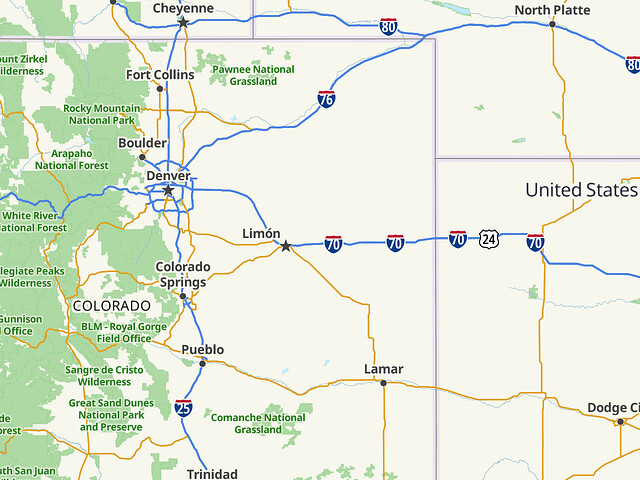No, I’m saying that principal cities are not the determining factor in how mappers have decided between city and town – and you’re helping to demonstrate this point, because the cutoff for a principal city is 10,000, not 80,000. The cities that form the name of an MSA are better candidates for place=city than the other principal cities, and better candidates than the principal cities of a μSA.
I’m also asserting that some regions have a tendency to promote more cities to city than others. The affinity for city is not strictly a coastal versus inland phenomenon; I was generalizing. Rather, the way it normally plays out is:
- The GNIS and TIGER imports classify places with a population under 100,000 as
townand over 100,000 ascity. - Some borderline places are reclassified, still generally adhering to the 100,000 threshold that used to be documented prominently.
- An inexperienced mapper is unfamiliar with OSM’s unconventional approach to place classification and proceeds to retag places en masse or haphazardly, presumably based on official designations. Depending on the state, this eliminates usage of
place=villageorplace=townthroughout the state, but generally, the map is now awash inplace=citynodes at low zoom levels. - In a less densely populated region, this is so jarring that more experienced mappers step in to revert the changes. Now the local community can no longer go off gut feeling and has to decide on a more rigorous rubric or reiterate the 100,000 threshold. At this point, there’s usually discussion about adding nuance beyond a rote population threshold.
- For example, I wrote up this guide for Ohio based on the global documentation based on private discussions with other mappers in the state.
- But the mass changes persist much longer in a more densely populated region, or in an area with few vigilant mappers.
The previously documented 100,000 threshold was very rigid, so in some regions, it ended up aligning to metropolitan areas’ core cities, while in others, it was so arbitrary that mappers ignored it.
The definition I quoted, requiring city to be a suburb, is fake. No one follows that definition. I posted that strawman argument to show how relying on the formal concept of an MSA or CSA principal city, as discussed in the original post, would be highly problematic, and it seems that you agree.
A crossroads isn’t necessarily anyone’s idea of a city. On Monday, the AARoads folks had some fun advertising Limón (population 2,043) as the new capital of Colorado, on account of its special status as the Interstate 70 control city to nowhere, a frequent topic of outrage among roadgeeks:
It’s a different approach, to be sure. There aren’t any comparable metro areas in the Midwest. Is that a problem? Only if we care about establishing a more balanced distribution of each place classification. If we don’t care about that, then why not classify places strictly on the basis of population, as we used to? The problem is that we start twisting ourselves in knots about how the population is calculated, as we did regarding New England and as an osm-carto developer once did regarding California.
If we do decide to tag place=city more selectively in the L.A. metro area, I don’t envy the challenge of picking favorites. It’d be just as difficult as picking which of the many equally built-out grid streets should really be a primary street. But we have picked a subset of streets to be primary streets in many city grids. At first, it certainly ran counter to local mappers’ intuition, but the benefit is a less extreme distribution of classifications across regions. If we take a similar approach to place classification, maybe there wouldn’t be so much pressure to tag the Limóns of this country as major cities.
